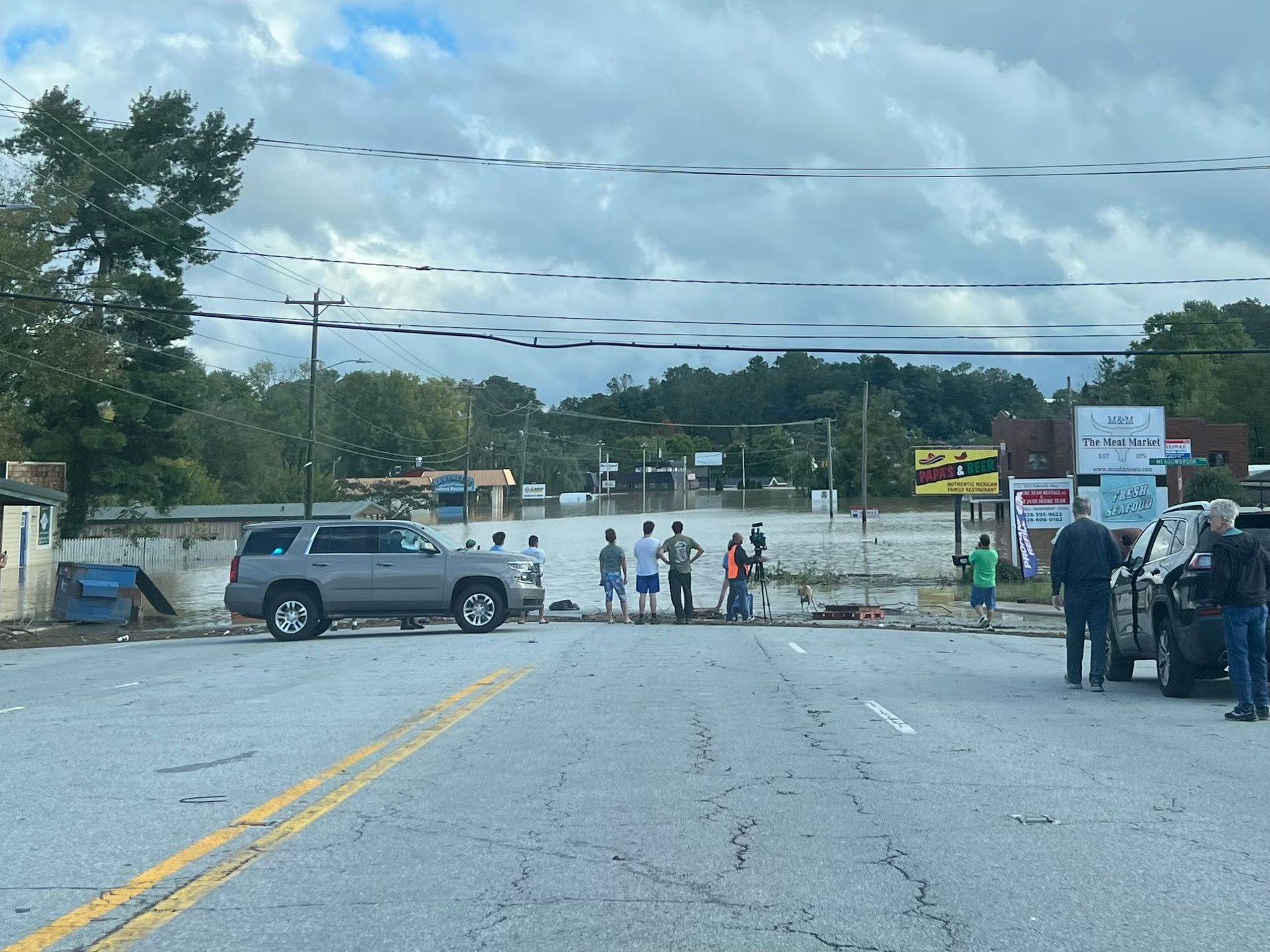Blog
BLOG

By 1919952
•
March 28, 2025
Updated on February 28, 2025 As recent tragedies have magnified, preparing your property for natural disasters and other emergencies is becoming increasingly urgent each year. 2023 was a record year for weather and climate disasters, with at least $1 billion in damages. These record 28 individual disasters included snow and ice storms, wildfires, droughts and heatwaves, floods, tornados, cyclones, and hail/severe weather. 2024 was nearly as disastrous, with 27 weather and climate disasters causing damages of $1 billion or more. Given this increasing frequency and severity, how can vacation rental operators proactively prepare for emergencies? “Disaster planning for weather-related emergencies is top of mind when it comes to ensuring the continuity of business operations and employee health and safety,” said Sue Jones, CEO of HR4VR, the STR industry’s only dedicated human resources consultancy. “Planning for other types of disasters, such as terrorism, epidemics, and workplace violence, often falls to the bottom of the list. Just think COVID-19. This is a good time to identify the type of disaster and the risk of impact to your business and workforce.” You can never be too prepared or prepare too early. This guide covers the essential components of emergency readiness. Evaluate natural disaster risks What natural disasters are most likely to affect your vacation rental? Does your property sit in a flood zone, wildfire-prone area, or near an earthquake fault line? To find out, use these FEMA tools to assess your risks. Visit your state and county emergency management website to gain additional insights. Understanding your property’s vulnerabilities empowers you to take preventative measures before a disaster strikes. Review your insurance policies Don’t take for granted that your homeowners or landlord insurance policy protects you in all of these disaster scenarios. Standard homeowner/landlord policies exclude coverage for floods, earthquakes, and landslides, and you may need to purchase supplemental coverage, according to the Insurance Information Institute . Homeowners often misunderstand their coverage for water damage. “Being that it is winter and much of the U.S. is experiencing colder weather, a situation such as the power going and pipes freezing resulting in water damage would fall on your regular home policy,” said Nick Massey, Chief Sales Officer at Proper Insurance. “A situation such as…Helene and Milton would fall under Flood Insurance with NFIP, not your home policy. This is why so many claims are being denied by home insurance companies because the damage was from a storm surge and rising water levels. If you didn’t have specific flood insurance, you are not likely to get a claim paid out.” You can find earthquake insurance policies from specialized carriers like GeoVera , Nick said. Flood insurance is available through the National Flood Insurance Program (NFIP). Nick suggested speaking with your insurer to understand your policy’s limits and exclusions. Maintain your property for disasters Perform routine inspections to identify and eliminate potential hazards. For example, in wildfire-prone areas, the National Fire Protection Association recommends removing dry vegetation and installing fire-resistant landscaping. If your property is in a hurricane-prone region, stay aware of when hurricane season starts and ends. It can extend from mid-May to the end of November. ATI Restoration recommends adding hurricane shutters and reinforcing doors and windows to prevent broken windows and water damage. Repairing broken fences, removing loose tiles, and replacing worn-out shingles can also minimize damage caused by high winds. Install and test safety equipment According to the U.S. Fire Administration , hosts should install a smoke detector in each bedroom, in hallways adjoining bedrooms, and on each level of the property. A carbon monoxide alarm should be present on each level of the property. The U.S. Fire Administration recommends testing smoke and carbon monoxide detectors monthly and replacing batteries as needed. It’s also a good idea to make fire extinguishers readily available in areas where fires are more likely to ignite, such as the kitchen, near fireplaces, and next to grills. Mark emergency exits, and during each turnover, check to ensure fire exits (i.e. windows and doors) are unobstructed by furniture, supplies, or other items. Stock up for worst-case scenarios Stock your home with emergency supplies to ensure your guests are taken care of if a disaster strikes while they’re staying there. Here is a list of basic emergency supplies to keep on hand, as recommended by the American Red Cross : First aid kit Flashlights with extra batteries 3 days of nonperishable food Bottled water (2 liters per person per day) Fire extinguisher Extra blankets Battery-powered radio Inform guests of the emergency supply location so they can quickly access it if needed.
September 18, 2019
It’s about to get a lot harder to rent a place if you’re visiting the Asheville area. At least if you’re not renting a traditional hotel room. Short-term rentals, made popular by websites such as Airbnb and VRBO.com, are when homeowners lease their houses for a brief period, such as one night, a week or even a month. But now, the profitable but scattered short-term rental industry is facing increased scrutiny from Asheville and nearby towns. Fines and new rules are being written and passed. In one case, homeowners violating rules could be fined up to $500 a night. Supporters of the new rules say they want to stop out-of-state property owners from buying up homes and jacking up already high housing costs. “There is an incredible amount of demand for short-term rentals in Asheville,” said Vice Mayor Marc Hunt. Proponents of the booming business, meanwhile, say many who rent out homes are locals who depend on the income in an area lacking good-paying jobs. Traditional hotels are easy to spot. Then there are bed-and-breakfasts, where guests stay in a house, renting rooms like in a hotel but often sharing common spaces, such as living rooms, and also eating meals together provided by the owner. Both of those lodging types are regulated by health and safety rules and often pay special taxes, such as Buncombe County’s 4-cent occupancy tax, on top of the standard 7-cent sales tax. Short-term rentals are commonly defined as entire homes or dwelling units, such as condominiums or basement apartments rented for brief periods of time. In some places, such as Asheville, the time period is less than 30 days. In other places, it’s anything less than 90 days. At least one short-term rental listing company, Airbnb, has started paying Buncombe’s occupancy tax. Homestays are different. They are when a person rents out a room or part of a home while the main resident stays there. Asheville, Biltmore Forest and Woodfin are all in the process of making rule changes to homestays and short-term rentals. Stay tuned for an ever increasing demand and surly to warrant more regulation.
September 18, 2019
The North Carolina Apple Festival is held annually over Labor Day Weekend in Hendersonville, North Carolina. It has been Western North Carolina’s Premier Family Festival for over 60 years. From September 2-September 5, 2016 you can enjoy 4 days of fun including one of the most well known Street Fairs in the Carolinas with freshly picked apples, arts & crafts, festival food, and free entertainment at the Historic Courthouse on Hendersonville’s Historic Main Street. We live on the East side of town amongst the apple orchards and cattle farms, to us, it’s God’s Country. There are dozens of restaurants, stores, gift shops and so much more to experience in Hendersonville during the Apple Festival but, here is the one item you cannot miss. The Circle L Farm will set up a small cooking station on Main St. typically right across the street from the old court house. The Laughter’s will put out the best fried apple pies you have ever tasted. Find the ice cream guy and go a la mode. There is so much to do and so much food and shopping and other fair activities but, don’t miss the fried pies. Also, head east on 64 towards Lake Lure, there are several Apple Houses to experience. Most have baked goods now, a few years ago they did not. Try the bread at Grandads’s or the donuts. Or an Apple slushy at Coston’s. It never ends. The fall in the mountains is incredible, the harvest and the Apple Festival make it the best place to live.
September 18, 2019
According to USA Today, “Retirees want relatively low cost of living and housing, a favorable tax situation, a low crime rate, an active downtown, great medical facilities and, more than ever, a range of activities that can keep them fit and healthy,” says Annette Fuller, managing editor of Where to Retire magazine. “Big cities still attract, such as Austin and Santa Fe, but the little guys – such as Mountain Home, Ark.; Natchez, Miss.; and Port Townsend, Wash. – have many relocated retirees who proudly boast of their new home and delight in finding an off-the-beaten-path location.” USA Today ranked Hendersonville, N.C. #1. Most people know Asheville, N.C., in the Western Mountains of the state. But, according to Terri King, CEO of Coldwell Banker King in Asheville, people are discovering the outlying areas. Twenty-five minutes south of Asheville is Hendersonville (pop. 13,000) which has many of the qualities sought by Baby Boomers, King says. She calls the city a “remarkably friendly yet sophisticated social experience.” Among the attributes, a 72-piece orchestra. It is also home to the official state theater, the Flat Rock Playhouse. And it’s 25 miles from Mission Hospital, which was ranked in the top 15 health care systems in 2013 by Thomson Reuters. “It has easy walking, waterfalls and a national forest,” King says. “And you are two to three hours from cities like Atlanta and Charlotte”. “It’s very conducive to a retired individual,” she says. “For Baby Boomers, it has a mild, four-season climate. People retirement age are done with the extremes in life.” Steve Wike, 64, publisher of BlueRidgeTravelGuide.com, and his wife, Mickie, moved to Hendersonville in 2010. “There is everything imaginable to do here,” he says. “I wouldn’t trade it. I love it here.” “There are over 200 waterfalls in Western North Carolina,” Wike says, and you can hike to almost all of them.” And, of course, there’s golf. The golf is amazing, once you have played a Mountain Course, playing in Florida has lost its allure.


